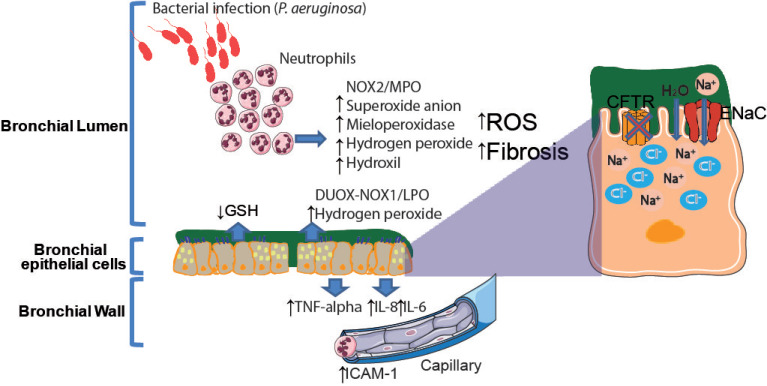Figure 1.
Redox imbalance in the conductive airways of patients affected by cystic fibrosis (CF). Cystic fibrosis transmembrane conductance regulator (CFTR) dysfunction in lungs prevents Cl− secretion and induces Na+ hyperabsorption at the airway apical surface, dehydration and impairment of mucociliary clearance. These events favor bacterial infection and prevent its elimination, inducing epithelial cells to secrete proinflammatory cytokines such as IL-8 and IL-6 and TNF-alpha, which attract neutrophils at the site of infection. As a result, a vicious cycle of neutrophilic inflammation and oxidative stress, produced by the release of large amounts of reactive oxygen species (ROS) both from epithelial cells and neutrophils through DUOX and NOX2, respectively, leads to irreversible airway destruction and fibrosis. Furthermore, low glutathione (GSH) levels further increase the oxidative stress. ROS also increase the migration of neutrophils from capillary venules.

